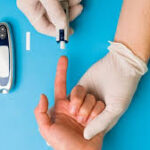Starting your first day of Blood Glucose Monitoring Training can feel both exciting and a little overwhelming. You’ll learn the step-by-step process of checking and recording blood sugar levels, understand why accuracy is critical, and gain hands-on practice with medical equipment under professional supervision. By the end of the day, you’ll not only feel more confident using a glucometer but also understand how your role directly supports better patient care.
Introduction: Why This Training Matters
Blood glucose monitoring is one of the most essential skills in modern healthcare and caregiving. Whether you’re a nurse, healthcare assistant, or caregiver in training, being able to check blood sugar safely and accurately is key to managing conditions like diabetes. On your first day of training, expect a mix of theory, demonstrations, and practical exercises that are designed to ease you into the process.
This article will walk you through what to expect, from the classroom setup to the hands-on sessions, so you feel prepared and confident before you even arrive.
Orientation and Course Overview
The day usually starts with introductions and a clear breakdown of what you’ll be learning. Trainers often highlight why glucose monitoring matters, the risks of errors, and how the skill fits into broader patient care. This orientation helps set the tone: it’s not just about pricking a finger and reading numbers, but about understanding the responsibility that comes with it.
Learning the Basics: What Is Blood Glucose Monitoring?
Early in the session, you’ll cover the fundamentals—what blood glucose is, how it affects the body, and why it’s important to keep levels within a safe range. Trainers often explain common conditions like type 1 and type 2 diabetes and how monitoring helps prevent serious complications.
At this point, expect to learn key terminology in simple terms, so you’re not left confused by medical jargon later in the course.
Getting Hands-On With Equipment
The highlight of the day is often the first time you hold and practice with a glucometer. During the glucometer training segment, instructors walk you through step-by-step use of the device. You’ll learn how to insert test strips, use a lancet correctly, and read the results safely.
Expect to practice on demonstration kits before working with real samples, ensuring you feel comfortable before applying your skills in real scenarios.
Safety and Hygiene Protocols
Accuracy in blood glucose monitoring isn’t just about numbers—it’s also about safety. Your first day will cover best practices for hand hygiene, safe disposal of sharps, and avoiding cross-contamination. Trainers emphasize why following these steps protects both you and the patient.
Many learners find this part reassuring because it shows that small actions—like wearing gloves and sanitizing equipment—make a huge difference in care quality.
Practical Scenarios and Role-Playing
To prepare you for real-life applications, trainers often use scenarios where you act as the caregiver. For example, you might role-play assisting an elderly patient who’s nervous about the finger-prick, or a child who needs reassurance. This exercise not only sharpens your technical skills but also strengthens your communication and empathy.
Integrating Skills With Other Training
Your first day may also highlight how blood glucose monitoring connects with other areas of healthcare. For instance, if you’ve completed or are planning to take a tracheostomy care course, you’ll see how both require precision, hygiene, and patient reassurance.
Similarly, those who have taken phlebotomy training courses often find blood glucose monitoring a natural extension, since both involve working with blood samples and require strong attention to detail.
Feedback and Q&A
By the end of your first day, you’ll likely receive feedback on your technique and a chance to ask questions. Trainers encourage open dialogue, so don’t hesitate to bring up any concerns—whether about handling equipment, recording results, or dealing with anxious patients.
This wrap-up session ensures you leave not just with new skills, but with clarity and confidence.
Common Emotions on Day One
It’s normal to feel nervous at the start, but most learners find that anxiety fades quickly once they get hands-on practice. Many even report feeling proud after their first successful reading, realizing they can now perform a task that directly improves patient health.
FAQs
- Do I need prior medical experience to join blood glucose monitoring training?
No, the course is designed for beginners and experienced caregivers alike. Trainers guide you step by step. - How long before I feel confident using a glucometer?
Most people feel comfortable after the first few supervised attempts. Practice and repetition build confidence quickly. - Is the training only useful for diabetes care?
Primarily, yes, but it also builds transferable skills in precision, hygiene, and patient communication. - What should I bring on my first day?
Usually, just a notebook, pen, and comfortable clothing. Some providers may supply gloves or kits for practice.
Conclusion: Stepping Into Your Role With Confidence
Your first day of blood glucose monitoring training is all about building a foundation. Expect to learn the science behind glucose levels, practice with equipment, and gain confidence through role-play and feedback. By the time you finish, you’ll have a clear understanding of both the technical and human sides of this skill.
More importantly, you’ll leave knowing you can make a real difference in someone’s life—one test at a time.

